Good oxygen situation in the Gulf of Finland in January
Observations made during the January expedition of the marine research vessel Aranda showed that the oxygen situation in the Gulf of Finland was the best in the last five winters. While the oxygen situation in the deeps of the Bothnian Sea remains reasonably good, it is deteriorating gradually. Phosphorus flows into the Gulf of Bothnia from the main basin, increasing concentrations in this sea area.
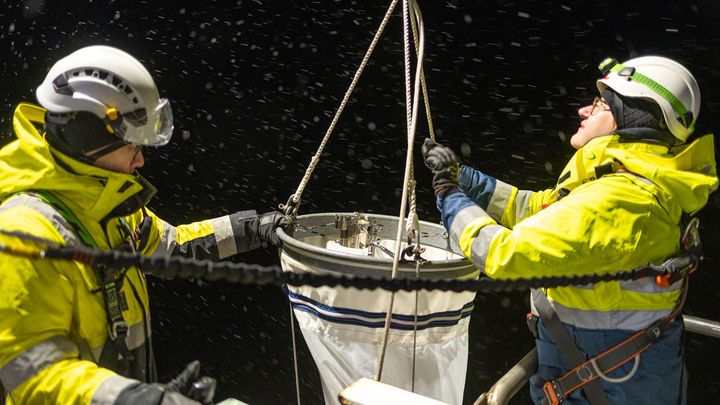
The winter expedition of the marine research vessel Aranda, which ended in late January, was directed to the Gulf of Finland, northern Baltic Sea and the Gulf of Bothnia. The expedition met the obligations under the EU Marine Strategy Framework Directive and the objectives of the HELCOM monitoring programme.
During the expedition, data were gathered on water stratification in the northern parts of the Baltic Sea, especially by oxygen concentration, salinity and temperature, as well as on any changes in nutrient concentrations. The findings are based on data collected by the Finnish Environment Institute during the January cruise and the results of a research expedition of the Swedish Meteorological and Hydrological Institute (SMHI) in December 2024 (Figure 1).
Gulf of Finland
The oxygen concentration was good from the surface layer to the bottom in the eastern Gulf of Finland all the way to the Hanko Peninsula (Figure 2). Anoxic and hydrogen sulphide rich deep water from the main basin was only found off the northwest coast of Estonia. A similar situation was previously observed in January 2020.
What the winters of 2020 and 2025 have in common is similar weather conditions. Winds that mainly come from a westerly direction for several months push water into the Gulf of Finland. In this situation, the halocline is lower down, the influx of anoxic water from the main basin of the Baltic Sea retreats to the west from this sea area, and the entire water mass in the Gulf of Finland can be mixed. As the weather type changes, however, the oxygen situation in the Gulf of Finland may deteriorate again relatively quickly.
Thanks to the good oxygen situation, the phosphate concentrations close to the bottom were only about one half of recent years’ levels at the stations located at the deepest points. In the surface layer these concentrations were nevertheless close to record levels. Dissolved nitrogen concentrations in the sea area were higher than average.
Senior Researcher Seppo Knuuttila believes that the high nitrogen concentration was largely a result of weather conditions during the winter: “The prevailing weather type has prevented nitrogen, which is mainly carried along by the Neva River, from flowing out of the Gulf of Finland.”
Archipelago Sea
The early winter was warm, and this was reflected in higher than usual water temperatures. Storm Jari and a windy period in late November disrupted water stratification, and by January the entire water column from the surface to the bottom was completely mixed. The observed oxygen concentrations were high at over 8 ml/l. The phosphate concentrations measured in the Archipelago Sea exceeded long-term averages, probably mainly as a result of more nutrient-rich water flowing in from the main basin and the western parts of the Gulf of Finland, and partly also of the mixing of the entire water column.
Main basin of the Baltic Sea
There is no improvement in sight in the poor oxygen situation that has persisted for decades in the main basin of the Baltic Sea. The water in the main basin remains anoxic below a depth of 80 to 90 metres, and the water layer depleted of oxygen extends from the Bornholm Deep to the northern parts of the main basin (Figure 3).
“The anoxic area of the main basin now extends to almost 50,000 square kilometres. The highest phosphate concentrations in deep waters were measured in the northern part of the main basin, where they exceeded 120 micrograms per litre,” notes Pekka Kotilainen, Senior Researcher.
Gulf of Bothnia
The deteriorating oxygen situation observed in deep areas of the Sea of Bothnia in recent years appears to persist, as does the increase in phosphate concentrations that began in the 2000s (Figures 4 and 5). In places, the phosphate concentrations observed in the Sea of Bothnia in January exceed those observed in the Archipelago Sea.
In Kvarken the entire water column was completely mixed and the oxygen situation was good. As in the Bothnian Sea, the phosphate concentrations in southern Kvarken exceeded long-term averages.
The phosphate concentration has also increased in the Bay of Bothnia in recent years. The elevated nutrient concentrations are due to nutrient-rich water flowing in from the Bothnian Sea through Kvarken. The oxygen situation in the Bay of Bothnia is at its usual good level.
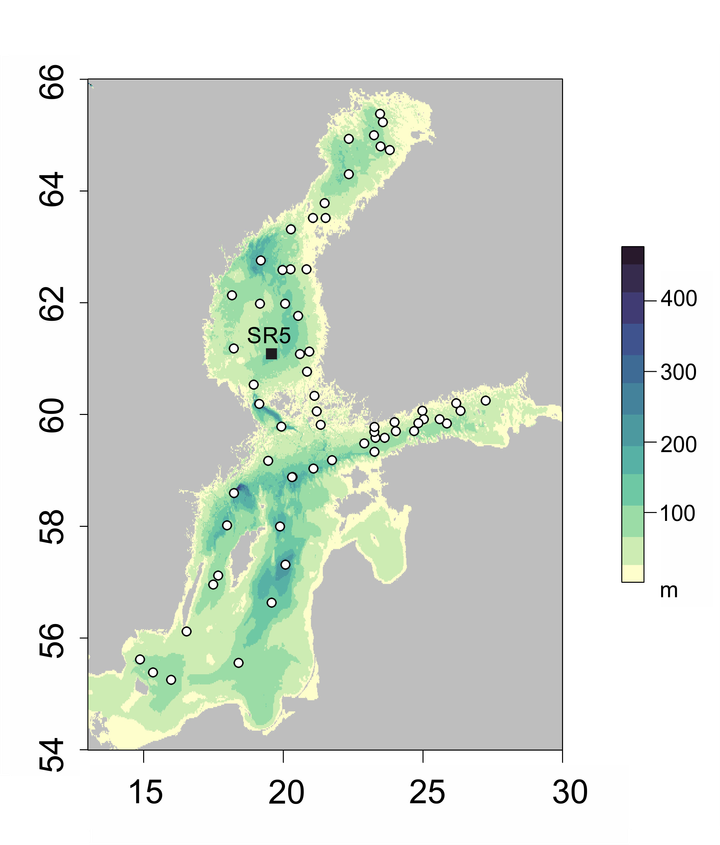
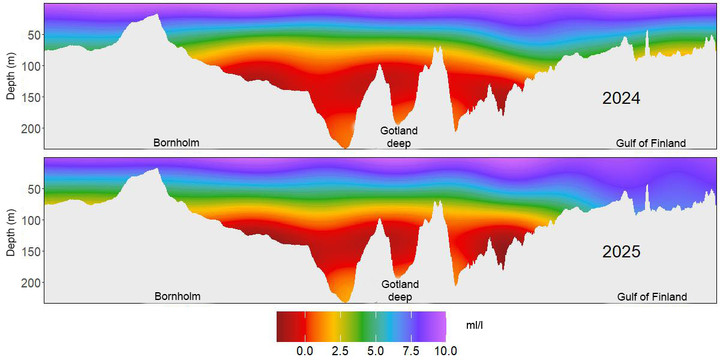
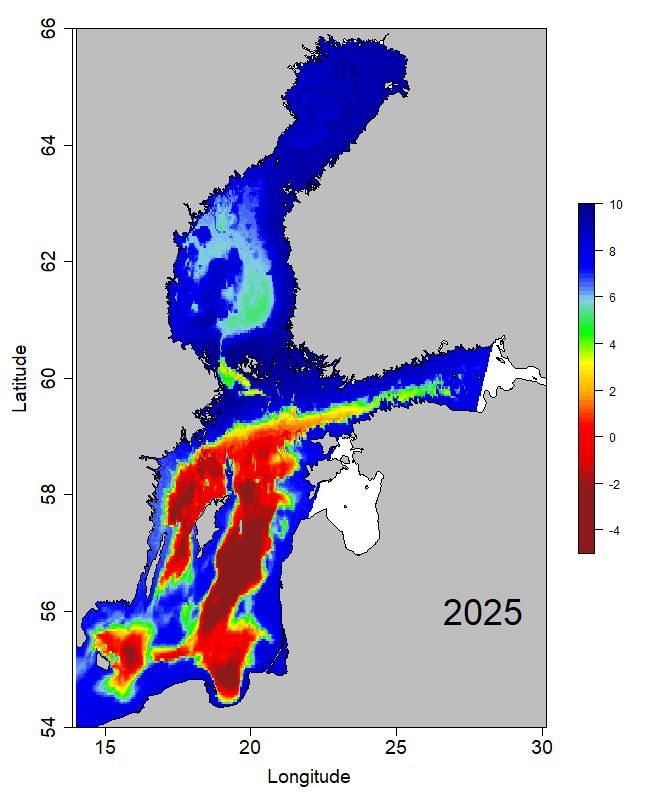
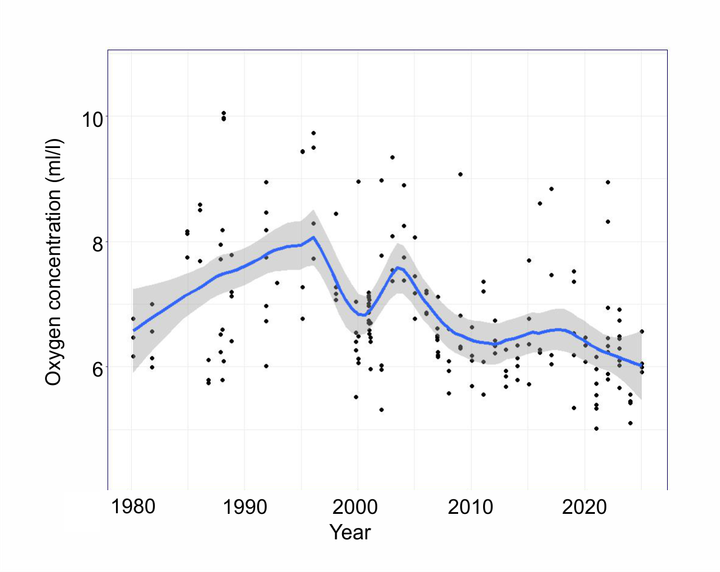
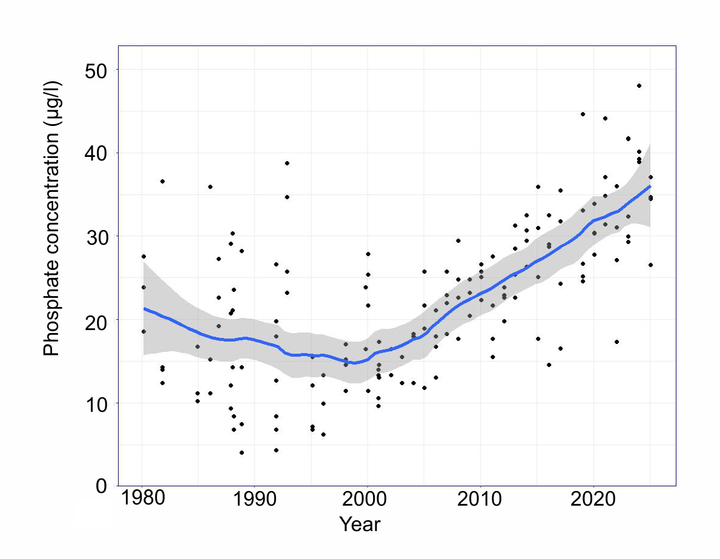
Keywords
Contacts
Senior Researcher Pekka Kotilainen, Finnish Environment Institute, phone +358 295 251 317, forename.surname@syke.fi
Senior Researcher Seppo Knuuttila, Finnish Environment Institute, phone +358 295 251 286, forename.surname@syke.fi
Communication specialist Eija Järvinen, Finnish Environment Institute, phone +358 295 251 242, forename.surname@syke.fi
Media service at Finnish Environment Institute
Our Media Service provides information on research, helps journalists find experts for interviews and provides photos for media use.
Our Communication experts will answer your inquiries on weekdays from 9 am to 4 pm.
Images
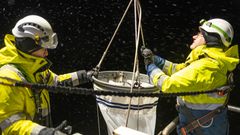
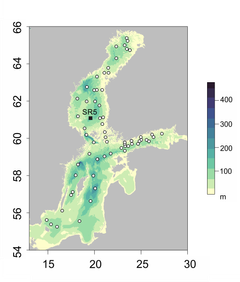
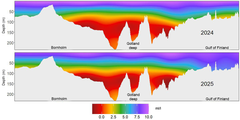
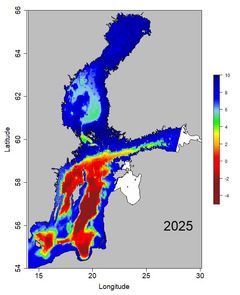
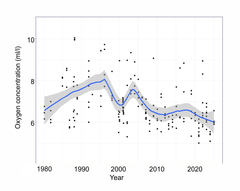

Finnish Environment Institute - We build hope through research.
Finnish Environment Institute
Latokartanonkaari 11
00790 Helsinki
+358 295 251 000
It is time to move beyond solving environmental problems one by one, to systemic sustainability transformations. The Finnish Environment Institute (Syke) contributes to building a sustainable society through research, information and services. The Finnish Environment Institute is a research institute with 700 experts and researchers located in Helsinki, Oulu, Jyväskylä and Joensuu.

Subscribe to releases from Suomen ympäristökeskus
Subscribe to all the latest releases from Suomen ympäristökeskus by registering your e-mail address below. You can unsubscribe at any time.
Latest releases from Suomen ympäristökeskus
Syreläget i Finska viken var bra i januari2.4.2025 08:40:00 EEST | Pressmeddelande
Observationerna under havsforskningsfartyget Arandas resa i januari visade att syreläget i Finska viken var bättre än under de fem senaste vintrarna. Syreläget i Bottenhavets djupområden är fortfarande relativt bra, men det försämras gradvis. Fosfor strömmar till Bottniska viken från huvudbassängen och den syns i havsområdet som höjda halter.
Suomenlahden tammikuinen happitilanne hyvä2.4.2025 08:40:00 EEST | Tiedote
Merentutkimusalus Arandan tammikuun matkalla tehdyt havainnot osoittivat, että Suomenlahden happitilanne oli paras viiteen viime talveen. Selkämeren syvänteiden happitilanne on edelleen kohtalaisen hyvä, mutta vähitellen heikkenevä. Pohjanlahdelle virtaa fosforia pääaltaalta, ja se näkyy merialueella pitoisuuksien kohoamisena.
Viikkokatsaus 31.3.–4.4.202527.3.2025 09:53:54 EET | Tiedote
Hei! Tässä tiedoksesi meillä Suomen ympäristökeskuksessa ensi viikolla ilmestyviä tiedotteita, uutisia, kampanjoita, blogeja ja uutiskirjeitä. Mukana myös tulevia tapahtumia ja webinaareja. Jakelemme viikkokatsauksen torstaisin STT:n kautta. Koosteet löytyvät myös STT-uutishuoneesta, josta voit tilata kaikki Suomen ympäristökeskuksen tiedotteet.
Tutkimus: Yhteiskunnan kriisinkestävyyttä vahvistettava paikallista kansalaistoimintaa tukemalla25.3.2025 09:12:19 EET | Tiedote
Paikallista kansalaistoimintaa ei tueta riittävästi, vaikka se on keskeinen osa yhteiskunnan kriisinkestävyyttä, todetaan Suomen ympäristökeskuksen, Helsingin yliopiston ja Demos Helsingin tuoreessa tutkimuksessa. Tutkijat ovat huolestuneita erityisesti haavoittuviin ryhmiin liittyvistä tuloksista, sillä vain kolmannes kansalaisyhteiskuntaa edustavista vastaajista koki, että yhteisön toiminta-alueella ihmiset pitävät haavoittuvimmista huolta.
Environmental information used in urban planning and municipal decision-making supports municipal vibrancy24.3.2025 06:03:00 EET | Press release
Municipalities play a key role in supporting residents' well-being, preventing biodiversity loss, and mitigating greenhouse gas emissions. Finnish Environment Institute’s new Policy Brief publications, aimed at municipal decision-makers, encourage the use of environmental information and preserving local natural environments.
In our pressroom you can read all our latest releases, find our press contacts, images, documents and other relevant information about us.
Visit our pressroom